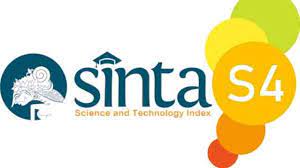METODE TUTOR SEBAYA UNTUK MENINGKATKAN HASIL DAN MOTIVASI BELAJAR SISWA
DOI:
https://doi.org/10.51878/learning.v3i1.2029Keywords:
Tutor sebaya, motivasi, hasil belajarAbstract
The success of a student's learning is influenced by many factors. These factors include models and learning methods. For this reason, it is necessary for a teacher to have the knowledge and skills to use learning models and methods. The learning models and methods used in the teaching and learning process sometimes also do not give good results in terms of learning outcomes even in learning motivation. This was experienced in learning activities in class XII MIA, which at that time was experiencing a pandemic crisis. so that learning in this case the number of students who are not full as a class is 36 students so that the results obtained are not optimal. For that we need a serious problem solving . This study aims to 1) improve learning outcomes 2) To find out empirically the effect of the application of peer speech methods on learning outcomes in Biology. The focus of this research is on the knowledge of transcription and translation processes in the process of protein synthesis. The research method used is experimental. The results of the analysis and hypothesis testing were obtained that there were differences in biology learning outcomes between learning outcomes before using the peer tutor method and after being taught the peer tutor metho
ABSTRAK
Keberhasilan belajar seorang siswa dipengaruhi oleh banyak factor. Factor tersebut antara lain model dan metode pembelajaran. Untuk itu perlu seorang guru untuk memiliki pengetahuan dan ketrampilan menggunakan model dan metode pmbelajaran. Model dan metode pembelajaran yang digunakan dalam proses belajar mengajar terkadang juga tidak memberikan dampak hasil yang baik di lihat dari hasil belajar bahkan dalam motivasi pembelajaran. Hal ini dialami dlam kegiatan pembelajaran di kelas XII MIA yang pada saat itu sedang mengalami krisis pandemic. sehingga pembelajaran dalam hal ini jumlah peserta didik yang tidak penuh sebagai mana layaknya sebuah kelas yaitu 36 siswa sehingga hasil yang di diperoleh tidak maksimal. Untuk itu perlu adanya pemecaan masalah yang serius . Penelitian ini bertujuan untuk 1) meningkatkan hasil belajar 2) Mengetahui secara empiris pengaruh penerapan metode tutur sebaya terhadap hasil belajar Biologi. Fokus peneitian pada pengetahuan proses transkripsi dan taranslasi pada proses sintesis protein. Metode penelitian yang digunakan adalah eksperimen. hasil analisis dan uji hipotesis diperoleh terdapat perbedaan hasil belajar biologi antara hasil belajar sebelum digunakan metode tutor sebaya dan sesudah diajarkan metode tutor sebaya.
Downloads
References
Ashiong P. Munthe. & Henny P Naibaho, (2019).Manfaat dan Kendala Penerapan Tutor Sebaya Untuk Siswa Kelas IV Sekolah Dasar Lentera Harapan Mamit,from
Blog Mari Belajar, Mari Belajar : Pengertian Tutor Sebaya, 21 sepetember 2016,
Nurma Izzati (2015). Pengaruh Penerapan Program Remedial dan Pengayaan melalui Pembelajaran Tutor Sebaya Terhadap Hasil belajar Matematika Siswa Vol 4 No 1 Juli 2015,
Ratri Candra Hastari (2019). Penerapan Strategi Tutor sebaya dalam meningkatkan Motivasi Belajar Matematika Vol 4 Nomor 1, Juni 2019.
Ratri Candra Hastari, 2019 Penerapan Strategi Tutor Sebaya dalam meningkatkan motivasi belajar Matematika.
Sanjaya,Wina. 2008. Strategi Pembelajaran Berorientasi Standar Proses Pendidikan. Jakarta: Kencana Prenada Media Group Tutor Sebaya . Dunduh 2 -03-2023
Yopi Nisa Febrianti, (2014) Peer Teaching (Tutor Sebaya) Sebagai Metode Pembelajaran Untuk Melatih Keterampilan Siswa Mengajar,
Yuliana Puspitasari., Rahmat Rais., Kismoyo., (2019), Studi Kasus tentang Metode Tutor Sebaya Terhadap Prestasi Belajar
Downloads
Published
How to Cite
Issue
Section
License
Copyright (c) 2023 LEARNING : Jurnal Inovasi Penelitian Pendidikan dan Pembelajaran

This work is licensed under a Creative Commons Attribution-ShareAlike 4.0 International License.
















